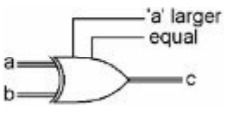Understanding HbA1c: How to Know Your Blood Sugar Control
Managing blood sugar levels is crucial for individuals with diabetes, and one of the key indicators of long-term blood sugar control is the HbA1c test. This article will delve into what HbA1c is, how it’s measured, and how you can interpret your results to better understand your blood sugar control.
What is HbA1c?

HbA1c, also known as glycated hemoglobin, is a measure of the average blood sugar level over the past two to three months. It reflects the percentage of your red blood cells that have glucose attached to them. The more glucose that is attached, the higher your HbA1c level will be.
How is HbA1c Measured?

HbA1c is measured through a blood test, typically done at a doctor’s office or laboratory. A small blood sample is taken, and the test measures the percentage of HbA1c in your blood. The results are usually reported as a percentage, with the normal range varying depending on the laboratory and the specific test used.
Here’s a table showing the general ranges for HbA1c levels and their corresponding blood sugar control categories:
| HbA1c Level (%) | Blood Sugar Control Category |
|---|---|
| <5.7 | Normal |
| 5.7-6.4 | Pre-diabetes |
| >6.5 | Diabetes |
Interpreting Your HbA1c Results

Understanding your HbA1c results is essential for managing your diabetes effectively. Here’s how to interpret your numbers:
Normal Range: If your HbA1c is below 5.7%, it indicates that your blood sugar levels have been consistently within the normal range over the past two to three months. This is a good sign, but it’s still important to continue monitoring your blood sugar levels and maintaining a healthy lifestyle.
Pre-diabetes Range: If your HbA1c is between 5.7% and 6.4%, you have pre-diabetes. This means your blood sugar levels are higher than normal but not high enough to be classified as diabetes. It’s crucial to take action to lower your blood sugar levels and prevent the progression to diabetes.
Diabetes Range: If your HbA1c is above 6.5%, you have diabetes. This indicates that your blood sugar levels have been consistently high over the past two to three months. It’s important to work closely with your healthcare provider to develop a treatment plan that includes lifestyle changes, medication, and regular monitoring of your blood sugar levels.
Factors Affecting HbA1c Levels
Several factors can affect your HbA1c levels, including:
-
Diet: The foods you eat can significantly impact your blood sugar levels and, consequently, your HbA1c. A balanced diet with a focus on whole foods, lean proteins, and fiber can help keep your blood sugar levels in check.
-
Exercise: Regular physical activity can help lower your blood sugar levels and improve your overall health. Aim for at least 150 minutes of moderate-intensity aerobic exercise per week.
-
Medication: If you have diabetes, medication can help manage your blood sugar levels. It’s important to take your medication as prescribed by your healthcare provider.
-
Stress: High levels of stress can cause your blood sugar levels to rise. Finding ways to manage stress, such as meditation, deep breathing exercises, or yoga, can help keep your blood sugar levels stable.
Conclusion
Understanding your HbA1c levels is a vital part of managing your diabetes. By monitoring your HbA1c and taking steps to maintain healthy blood sugar levels, you can improve your overall health and reduce the risk of complications associated with diabetes.



